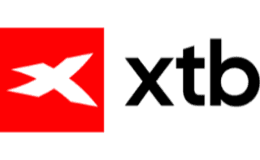An individual savings account (ISA) is a unique type of tax-efficient account that we’re lucky to have here in the UK. A stocks and shares ISA is a version of this account that allows you to invest whilst protecting your ISA portfolio from tax.
It may not sound super exciting on the surface, but the stocks and shares ISA is like a secret weapon for UK investors. It’s now easier and cheaper than ever to find and use an investment ISA, and you’ll be amazed at how it can help you build wealth much faster.
What is a stocks and shares ISA?
It’s a type of account that shields investments from UK taxes. Sometimes, people get confused and think that a stocks and shares ISA is a type of investment, but it’s not. It’s a type of investment account in which you hold investments.
Any investments or money held within a stocks and shares ISA won’t be subject to any additional tax in the UK, so these accounts can grow free from the burden and hassle of tax. It’s similar in structure to a cash ISA, except for the fact that it’s designed to hold investments rather than cash.
How does a stocks and shares ISA work?
The account itself, on the surface, works exactly the same way as any other investment account. So, after you open a stocks and shares ISA and start using it, you won’t notice any difference on your end because all the magic happens behind the scenes.
Each year, you’ll have an annual ISA allowance that can be used with one type of ISA or split across several. In the 2025/2026 tax year, you have a £20,000 ISA allowance. You can use part or all of this for your stocks and shares ISA. So, you’re able to put up to a total of £20,000 in your stocks and shares ISA this year.
The 2 main ways you make money from investments are:
- Appreciation. This is when you buy an investment and then sell it for a high price at a later date. The difference between what you paid for it and what you sold it for is known as a “capital gain”, which basically just means your profit.
- Income. Fixed income investments like bonds will pay you money at specified times. Also, some investments pay shareholders dividends as a reward for holding the investment.
Normally, you’d get taxed on money you make from your investments (after you breach your tax-free allowances, which we cover later). But the ISA wrapper means you don’t have to pay the UK tax you normally would. And, when you withdraw money from your stocks and shares ISA, it doesn’t count towards your income tax from that year.
Types of stocks & shares ISA platforms
Other than flexible and non-flexible ISAs, the stocks and shares ISA wrappers are all structured in the same way. However, each investing platform will differ in what you can hold within your ISA wrapper.
The 2 main types of stocks and shares ISA platforms are:
- DIY platforms. With these platforms, you can pick your own investments.
- Robo-advisor platforms. For this type of platform, you’ll be assigned a ready-made investment portfolio.
Compare DIY platforms
Here are some DIY investment platforms that offer stocks and shares ISAs. These accounts let you buy individual investments to craft your own perfect portfolio.
Finder Score for trading platforms
To make comparing even easier we came up with the Finder Score. Costs, features, ease and range of investments across 30+ platforms are all weighted and scaled to produce a score out of 10. The higher the score the better the platform – simple.
Read the full methodologyCompare robo-advisor platforms
Robo-advisors are platforms that will invest on your behalf. You can choose between portfolios made by professionals or get matched with one based on your goals and risk appetite.
Finder Score for trading platforms
To make comparing even easier we came up with the Finder Score. Costs, features, ease and range of investments across 30+ platforms are all weighted and scaled to produce a score out of 10. The higher the score the better the platform – simple.
Read the full methodologyWhy use a stocks and shares ISA?
Any profit you make on any investments (through capital gains or income) will be shielded from tax. And, unlike a pension, you don’t pay income tax on any withdrawals from your stocks and shares ISA. Paying less tax means keeping more of your money, leaving you wealthier.
It’s like having a secret (but legal) account completely outside the UK tax system. When it comes to UK tax, the stocks and shares ISA wrapper is like an invisible cloak that you can throw over your portfolio. Not only does it reduce your tax responsibilities, but it’s also less hassle for you because there’s no boring paperwork to file each year, either.
Tax-free allowances in the UK
It’s worth having a grasp of tax-free allowances because this will help highlight the importance of using a stocks and shares ISA. Previously, you had much higher tax-free allowances, which made the ISA wrapper more useful for those with larger portfolios.
Today, the ISA is more important than ever because of the drastic lowering of the tax-free thresholds. In the 2025/2026 tax year, the tax-free allowances are set at:
- Capital gains tax (CGT). The yearly tax-free allowance for CGT is £3,000.
- Dividend tax. The yearly tax-free allowance is £500.
If you make a capital gain of more than £3,000 or earn more than £500 in dividends, you’ll have to pay a certain level of tax. Using a stocks and shares ISA means you get to swerve this entirely.
How much can you invest with a stocks and shares ISA?
You can put in up to £20,000 each UK tax year into a stocks and shares ISA. At the moment, there’s no total upper limit. So, you can invest as much as you want over the years (as long as you’re only putting in £20,000 maximum each year).
However, the yearly allowance isn’t guaranteed going forward, and it can change. In the past, it has increased and has now remained at the current level for a number of years.
But the UK government could change this policy and remove or reduce the ISA allowance in the future, and unused allowance each year doesn’t roll over, which is why people like to say “use it or lose it”.
What is a flexible stocks and shares ISA?
One difference that can set stocks and shares ISAs apart is whether the ISA is flexible. Here’s what each option means:
- Flexible ISA. This allows you to withdraw money from your ISA and pay it back within the same year without it affecting your yearly allowance.
- Non-flexible ISA. If you take money out of this ISA, replacing it will eat into your allowance for the year.
ISA investment options
The sky’s the limit when it comes to investment options for a stocks and shares ISA. Your only limitations revolve around what your platform will let you invest in.
Here are examples of the types of investments you could hold in a stocks and shares ISA:
- Buy shares in companies
- Index funds and exchange-traded funds (ETFs)
- Investment trusts
- Unit trusts
- Bonds
- Ready-made portfolios
As mentioned, not every platform will offer you all types of investments. So, understanding how you want to invest with your stocks and shares ISA will help you pick the right platform.

"ISAs keep going from strength to strength. Last year, we saw stocks and shares ISAs become more important than ever due to a drastic lowering in the tax-free allowances for both dividends and capital gains. And your dividend allowance is dropping further, from £1,000 to £500 in 2024.
This year, changes to ISAs in April 2024 mean you have more flexibility and options than ever before. The rules are being eased so you can open and pay into more than one stocks and shares ISA each year. Loosening up the restrictions lets you hold multiple investment ISAs, meaning you can benefit from each platform’s strengths. You’ll also still have a £20,000 yearly allowance to spread around a selection of ISAs as you see fit."

0% commission stocks/ETFs
Managed 'Smart Portfolios'

Fractional shares
5,400+ stocks/ETFs

0% commission
No extra cost for an ISA
The risks of stocks and shares ISAs
It’s not always plain sailing with stocks and shares or any type of investment.
The investment risk of a stocks and shares ISA isn’t the account itself, but the underlying investments you hold within the wrapper.
All stocks and shares ISAs are fairly similar in structure (flexible ISAs being the only key differentiator). However, the risks lie the investments you choose (by yourself or with a robo-advisor).
It’s important to use your stocks and shares ISA to hold investments that fall within your personal attitude towards risk. When investing, there are options that can be more, or less, risky. So, it’s worth understanding this first before you invest. You should be prepared to hold investments in your ISA for at least 5 years.
What is the average return on a stocks and shares ISA?
The average annual return on a stocks and shares ISA over the past 5 years has been 6.37%, compared to 2.08% for a cash ISA. Over the past 10 years, it has been 9.64% annually compared to 1.2% for a cash ISA.
However, the performance of this type of ISA can vary significantly, seeing losses as well as returns over the course of a year. For example, the average stocks and shares ISA experienced a loss of 3.27% between February 2022 and February 2023. The table below highlights the variation in performance year-on-year.
| Year | Average stocks and shares ISA return | Average cash ISA return |
|---|---|---|
| 2024/2025 | 11.86% | 3.80% |
| 2023/2024 | 2.80% | 3.73% |
| 2022/2023 | -3.27% | 1.71% |
| 2021/2022 | 6.92% | 0.51% |
| 2020/2021 | 13.55% | 0.63% |
How to choose and open a stocks and shares ISA
Here’s how you can open a stocks and shares ISA and start investing in a few simple steps:
- Decide how you want to invest. Think about whether you want to pick your own investments or use a robo-advisor to select a portfolio for you.
- Choose a platform. Select a platform for your stocks and shares ISA. Remember, you can now open multiple ISAs and pay into them in the same year.
- Open your account. After deciding on a platform, you’ll need basic personal details, including your national insurance (NI) number to open an account and set up the ISA.
- Deposit funds and invest. With your stocks and shares ISA ready to go, the final step is to deposit funds into your account and start investing.
Transferring a stocks and shares ISA
You can usually transfer stocks and shares ISAs to another provider if you want to. All providers must allow outbound ISA transfers, but they don’t have to allow incoming transfers, so always check.
Many providers have ISA switching services that handle it all for you. It’s not a good idea to just withdraw everything and invest it with the new provider, as you’ll lose some of the protection you’ve built up and your allowance for the current year will be affected.
Can I invest ethically in a stocks and shares ISA?
You can! There are a few different ways you can invest ethically:
- Ethical companies. The first way is to find ethical firms and buy shares in them. You can search for individual companies here at Finder to see their ESG scores.
- Ethical funds. The second way is to find ethical funds and invest in those. Using a fund screener on your chosen provider website, you can search keywords like “ethical”, “ESG”, “sustainable” and “impact” to find some.
- Ready-made portfolios. The third way is to choose a robo-advisor and invest in an ethical ready-made portfolio. Lots of providers have ethical options to choose from.
Pros and cons of stocks and shares ISAs
Pros
- Invest up to £20,000 each tax year
- Pay no UK capital gains or dividend tax
- Pay no income tax when you withdraw
- You can now open multiple ISAs
- No paperwork or hassle
Cons
- Yearly allowance can change
- Some providers charge extra fees to hold an ISA
- Your investment choice can be limited by platforms
- Investments could rise or fall
Bottom line
A stocks and shares ISA is a type of investment account that protects your portfolio from UK taxes. Many share dealing platforms offer ISAs, but some charge an added fee to hold one.
It’s well worth making the most of your ISA allowance each year if you plan on investing because you can stop chunks of your profit from being taken away by the government. Over time, as your wealth builds, this will become even more important and valuable – especially as tax-free allowances have reduced over recent years.
Frequently asked questions
Start stocks and shares ISAs comparison
Sources
Read more on Stocks And Shares ISA
-
Stocks and shares ISA compound interest
How compound interest can make your stocks and shares investments grow faster than they would do otherwise.
-
Stocks and shares ISA dividends
Discover how tax on stocks and shares ISA dividends works if you’re holding this type of investment.
-
Managed stocks and shares ISAs
We explain what you need to know about managed stocks and shares ISAs, from the different types to how they compare against DIY ISAs.
-
Stocks and shares ISA vs general investment account
Should you hold your investments in an ISA, a general account, or both? Here’s the lowdown on your options.
-
Best performing stocks and shares ISA
Find out the best performing stocks and shares ISA funds year-to-date, annually and over the last 5 years.
-
Stocks and shares ISA risks
If you’re thinking of opening a stocks and shares ISA, make sure you understand the risk and how to manage it.
-
Can you have more than one stocks and shares ISA?
Stocks and shares ISAs can help you maximise investment returns – but they come with strings attached. We explain one of the key restrictions.
-
Stocks and shares ISA deadline
Use it or lose it: We explain why the stocks and shares ISA deadline matters if you want to maximise your tax-free investment allowances.
-
Cash ISA vs stocks and shares ISA
Looking to invest in an ISA and not sure of the difference? Read our guide as we look at the pros and cons of each and how to invest.
-
Where does our tax money go in the UK?
We look at how many people are paying tax, where the UK’s tax revenue comes from and what the money is spent on.